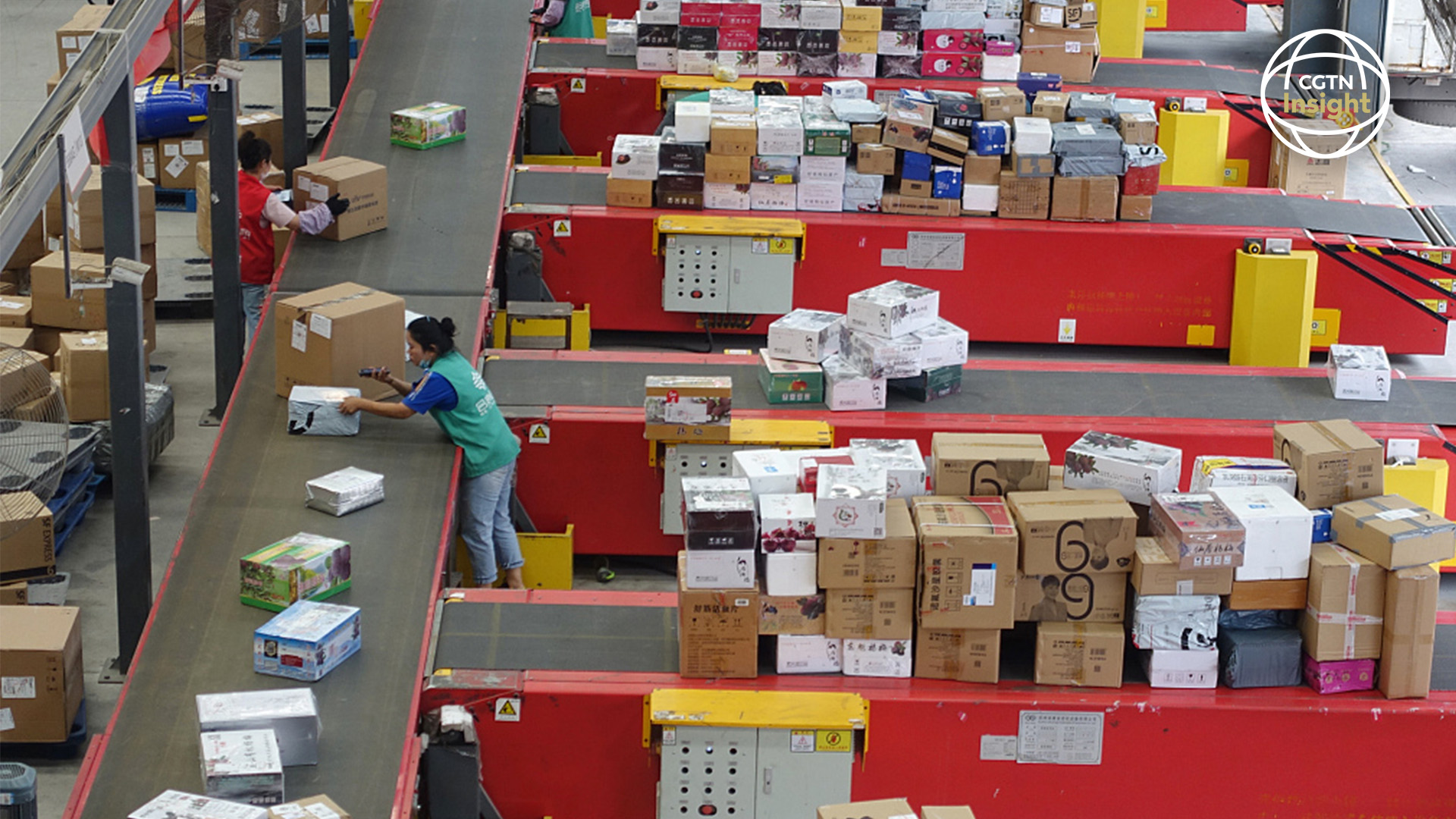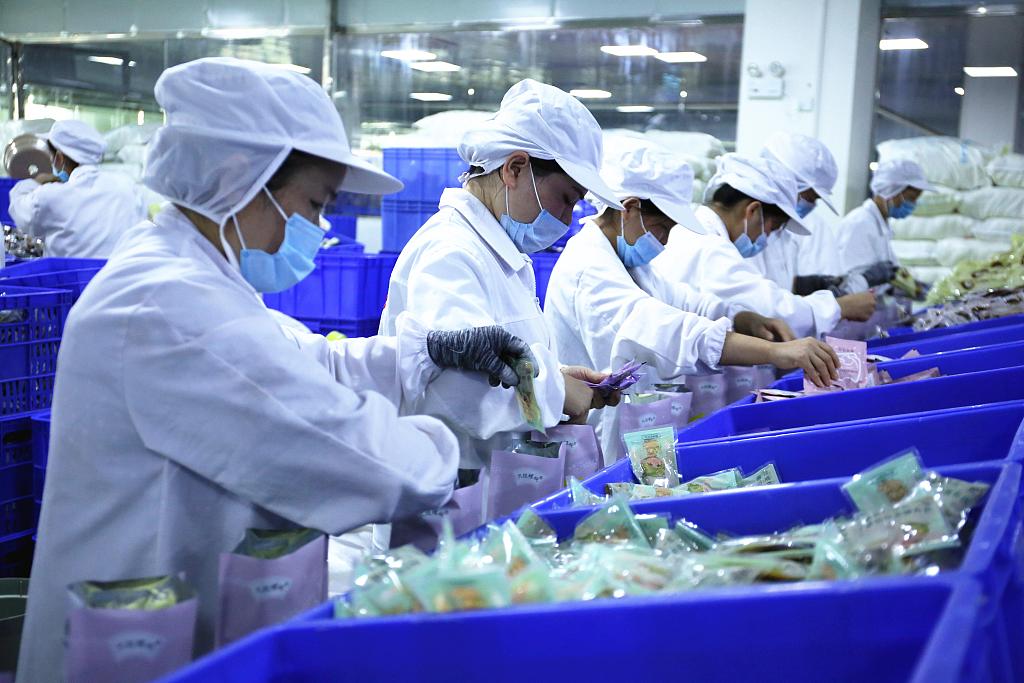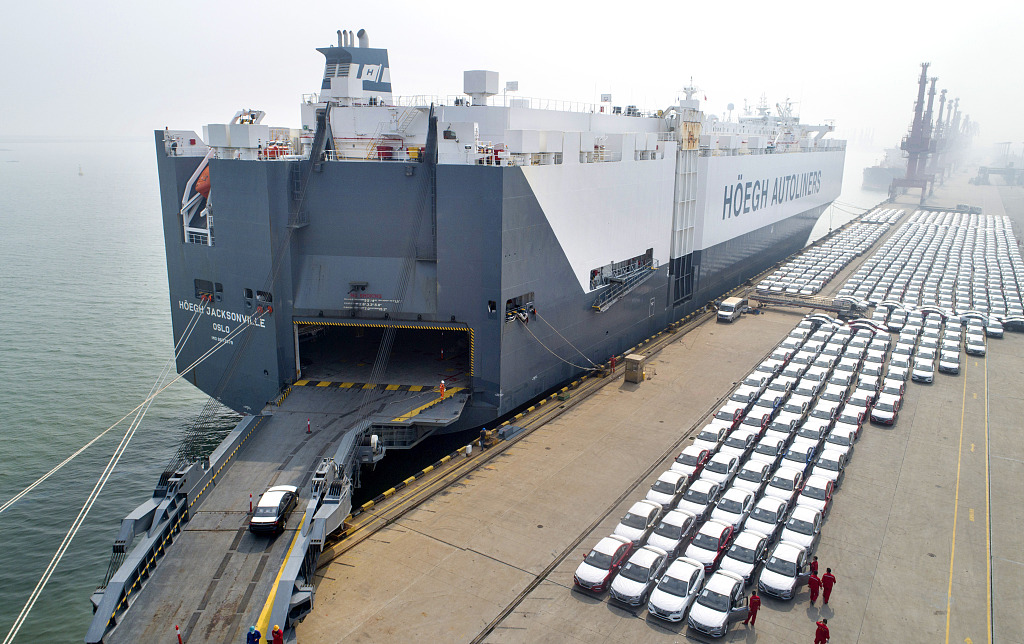
Reversing the contraction of the first three months of this year, the Chinese economy is back on track to a faster-than-expected recovery. On Thursday, the National Bureau of Statistics reported that China's economy grew by 3.2 percent in the second quarter, compared to the same period last year, beating market forecasts.
The rebound didn't come easy as the country experienced a nearly seven-percent GDP slump for the first time in decades between January and March, mainly caused by the coronavirus outbreak. But the downward trend was effectively halted after a series of stimulus policies were introduced to counter the negative impact of the poisonous dose on the Chinese economy.
A revisit of how the world's second-largest economy has survived could explain its trend in the coming months and years.
The 'black swan'
Marred by the U.S.-initiated trade war, China last year had its slowest economic growth since 1990. But the 6.1-percent growth rate was within the government's annual target as the country shifted its focus from quantity to quality, stressing a more sustainable and balanced growth.
In January, the IMF had projected that a growth rate of around six percent could be achieved this year, but then the coronavirus outbreak occurred in Wuhan, an industrial and transportation hub in central China.
The ensuing lockdown of the city and nationwide preventative and control measures, such as mobility restrictions and the closing of non-essential production and business activities, gave top priority to public health and safety rather than economic gains. Thus, almost all economic sectors were severely hit.
In the first three months, China's retail sales of consumer goods, a major indicator of consumption growth, slumped 19 percent year on year. The other two main driving forces of the economy, namely, foreign trade and investment in fixed assets, fell by more than six percent and 16 percent, respectively.

Workers pack "river snail rice noodles", a specialty food of Liuzhou, at a production plant in Liuzhou, Guangxi, for the annual "618 online shopping festival", during which record sales were reached nationwide, June 18, 2020. /CFP
Workers pack "river snail rice noodles", a specialty food of Liuzhou, at a production plant in Liuzhou, Guangxi, for the annual "618 online shopping festival", during which record sales were reached nationwide, June 18, 2020. /CFP
The revised plan
The negative impact of the "black swan" pushed the central government to adjust its policy plan. At the Central Economic Work Conference held in December, better implementation of the tax and fee cuts introduced earlier last year, instead of more aggressive tax reduction, was outlined.
But as the coronavirus dampened domestic consumption and production, further expansionary fiscal and monetary policies were urgently needed to ensure people's livelihoods and corporate survival.
Starting in February, the central government introduced a series of measures for that purpose. They included additional tax breaks and the postponement or suspension for companies' mandatory contributions to social insurances and housing fund, an extension of the coverage of unemployment insurance to rural migrant workers, and VAT exemption for the services sector, which included restaurants and hotels, tourism and entertainment, and culture and sports. The government also aimed to increase its budget deficit to a record 3.6 percent of gross domestic product this year, compared with 2.8 percent last year.
New monetary policies, such as lower reserve requirement ratios for banks, lending rate cuts, and reverse bond repurchase operations by the central bank, have also been adopted to inject liquidity and provide cheaper loans to market players, especially small-and-medium-sized firms.
The reversed trend
The measures gave a booster shot into the economy as business activities began to resume in late-February, thanks to the coronavirus' effective containment in the country.
In March, China's official Purchasing Managers' Index (PMI), an indicator of business activity in the manufacturing sector, rose above the 50-point threshold to 52 from a record low of less than 36 in February. The result reflected the expansion of the overall economy and signified a V-shaped recovery, beating earlier expectations of a gradual U-shaped rebound. The index stayed above 50 in the following months. The industrial output returned to positive territory in April, rising over four percent year-on-year in the second quarter, compared with an 8.4 percent fall in the first quarter.
In the meantime, domestic consumption started to recover faster in the second quarter as local governments put in place a variety of incentive measures, including consumption coupons, to revive retail after restrictive measures ended. The country's total retail sales of consumer goods went down by a little less than four percent year on year between April and June, a significant improvement over the 19-percent slump recorded in the first quarter.
Another highlight is foreign trade. Even though imports and exports in the second quarter were still lower than the level recorded during the same period last year, the decrease was over six percentage points lower than in the first quarter. In particular, the country outperformed negative expectations to record a 4.3-percent year-on-year rise in exports and a 6.2-percent increase in imports in June.
Other indicators of the economy, such as fixed-asset investment, property development, and household income, all showed a relatively fast recovery in the second quarter.

Vehicles are loaded onto a large ocean-bound RORO cargo ship for export at Lianyungang Port, Jiangsu Province, June 20, 2020. /CFP
Vehicles are loaded onto a large ocean-bound RORO cargo ship for export at Lianyungang Port, Jiangsu Province, June 20, 2020. /CFP
Potential bright side in the 'new normal'
The V-shaped rebound of the Chinese economy in the first six months was achieved while the country was yet fully reopened. It reflects the strength and resilience of the economy amid an unexpected crisis.
The record sales reached during the annual online shopping event a month ago, and the jump in imports offered a glimpse into the potential of domestic demand. After restrictions on domestic tourism and cultural and recreational events are gradually eased, more demand is expected to be unleashed in the second half of the year. Export and investment, two other major driving forces, may also have a strong chance of going up in the coming months as more countries reopen their economies, and China continues to carry out new infrastructure construction and updating plans.
But there are also risks as the coronavirus is expected to be a lingering part of daily life. Fresh disruptions of economic activities are likely to emerge if new waves of the virus emerge. No matter if it occurs at home or abroad, the Chinese economy will be affected.
The good news is that China's experience in dealing with the virus will give the country an advantage in managing the negative impact. The efficiency demonstrated in handling the new surges in coronavirus cases in several cities, including Beijing, reflects society's general efficiency. It was a key factor in ensuring a relatively quick recovery.
As the nation adapts to a "new normal" of co-existing with the coronavirus, fields like e-commerce, online education and entertainment, and smart services powered by digital technologies and personal protective equipment and medicine, will gain momentum and increase their stake in the economy.
Being the first major economy to return to growth, China's new development trend is set to create more business opportunities throughout the rest of the year and in the years to come.
(If you want to contribute and have specific expertise, please contact us at opinions@cgtn.com.)